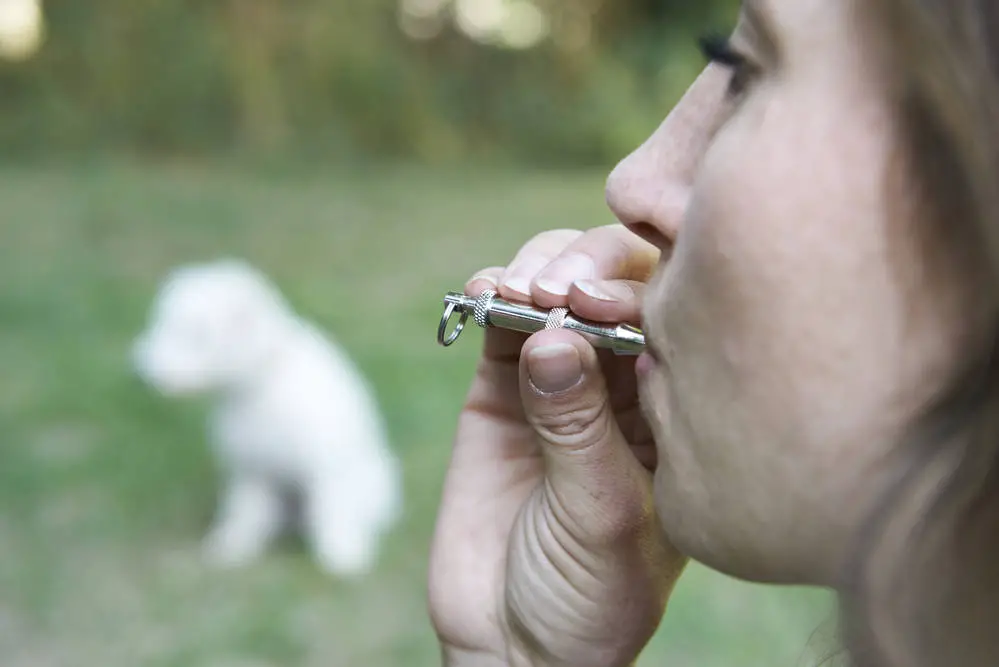 As a dog parent, you obviously want what’s best for your little furkid. From food to play to grooming and caring, it’s important that you know what your furball can take and what he can’t; which practices, foods and habits are okay and which should be discouraged.
As a dog parent, you obviously want what’s best for your little furkid. From food to play to grooming and caring, it’s important that you know what your furball can take and what he can’t; which practices, foods and habits are okay and which should be discouraged.
Training is an important part of every pupper’s life; much as we love the mischief and fun that dogs bring to our lives, we’re considerably less forgiving when it’s the brand new couch that’s been chewed to bits!
So how best do you train your dog? Well, a lot of parents and trainers swear by dog whistles, claiming that these handy gadgets make dogs do everything from fetching to stopping barking to generally obeying all your commands!
However, do these really work? And is there a chance that they could be hurting your precious pooch’s ears? When and how should you use them?
Read on to find out!
A Glimpse Into History!
Dog whistles create noises at extremely high frequencies that only dogs can hear and we can’t (ultrasound frequency). Also known as a Galton’s whistle, these little objects saw the light of day as the research devices of Sir Francis Galton in 1876. (They’re mentioned in his book ‘Inquiries Into Human Faculty and Its Development’).
Originally developed to test the range of human hearing, the very first prototype was a brass whistle with a slide that allowed alteration of the whistle’s frequency.
On experimenting with dogs, Galton realized that dogs have a much higher hearing frequency—47,000 Hz compared to an adult human’s 16,000 Hz, probably developed as a means to hear the high noises made by small prey by their wild ancestors.
There are many different types of dog whistles:
- Silent whistles
- Pealess/pea whistles
- Dual-tone whistles
- Digital whistles
Though the sound each whistle makes may be different, they all achieve the same purpose—of getting your dog’s attention!
It should also be noted that silent whistles are, obviously, not really silent. They just function at a higher frequency and were specially designed for gun dogs and hunting dogs, as the frequency they can hear is generally higher than a lot of animals.
Why Is a Whistle Used?
The most common purpose for a dog whistle is training—these are used, along with clickers and treats, to teach dogs what they should or shouldn’t do or how to perform a task right.
In order to find out which frequency your dog can hear, the most common test is the “wake-up test”; you blow the whistle while your dog is asleep, adjusting the frequency till he wakes up. The whistle is a great way to communicate effectively with your dog!
Whistles are also used in many sporting events for dogs, indicating to them when to start and stop, much like guns in track events. Whistles are an especially common sight in sheepdog competitions.
But Do They Actually Work?
Sadly, there’s no solid answer to this—the best we can muster is a “maybe”! This is because every dog is different; just as every child responds differently to a particular technique of teaching, different dogs respond differently to whistles. You may have to juggle a few methods before you find one that works for your furball if the whistle doesn’t!

Dog Behaving Badly?

Brain Training for Dogs uses a series of specifically designed course modules that include games, training videos, and more to eliminate troublesome behavior.
Created by a professional CPDT-KA certified dog trainer to give you the obedient and well-behaved dog you always wanted.
Are They Harmful?
As with any object, improper usage of the whistle could harm your dog’s hearing. While normally blowing the whistle may efficiently achieve the purpose, sans any damage to your dog’s hearing, doing things such as blowing it extremely loudly or for long periods is not a wise thing to do!
Just as someone blowing a whistle right next to your ear or blowing it for a long period of time not only damages your hearing but gets you irritated, dogs, too, get affected by dog whistles being blown this way.
Additionally, overusing the whistle/using it unnecessarily can render it ineffective, or your dog may start getting annoyed by it and associate it with something other than what is supposed to be associated!
The Right Way to Use a Whistle
The key lies in using the whistle meaningfully, and not unnecessarily, to train your pet. It is recommended that dog whistles be used only as a secondary measure or as a supplement to another primary tool of training, such as clickers and treats.
Using whistles with positive reinforcement, such as patting your dog when he responds to the whistle, is a great way to get the best out of both your dog and the whistle! However, do this only occasionally; avoid spoiling or pampering your pet too much, till he learns to efficiently do what you expect of him.
If you’re ever in doubt, turn to a veterinarian or a professional trainer; they can help you out with using a whistle the right way to get the maximum efficiency and effectiveness in training.
When Should You Not Use Whistles?
As mentioned earlier, dog whistles shouldn’t be used too frequently, as this can irritate, annoy and upset your pup. This is just counterproductive and can render the whistle useless.
Remember, though you can’t hear the whistle, your little furball can (in addition to a ton of other sounds you may not be able to hear), thanks to his or her super-sensitive, super-powerful hearing. Therefore, the sounds that annoy your pet, or pain him or her, will not even be heard by you!
Don’t abuse the whistle—use it sparingly and more importantly, observe your pet’s reaction to it! Dogs are mostly very transparent—you can easily recognize whether a dog likes or dislikes something, is happy or sad.
Remember, don’t use it close to your dog’s ears and if you’re unsure, as mentioned, consult a vet or trainer.
The Final Word
So much of what surrounds a whistle is so uncertain, such as whether it works on your dog or not and how your pooch will respond to it. What is certain, though, is that whistles can become harmful, even if they inherently aren’t, if used improperly.
Therefore, use whistles with discretion and always, always keep a track of your pet’s reactions to them. Notice whether the response is positive or negative and take it from there; this will work best for you, your furkid and his or her training!
